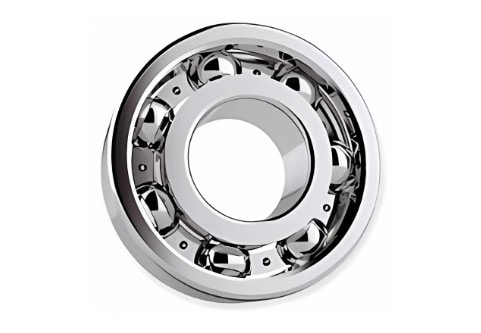The Only Guide to Volution Bearing
Volution Bearing Can Be Fun For Anyone
Table of ContentsVolution Bearing Things To Know Before You Get ThisNot known Details About Volution Bearing The 10-Minute Rule for Volution BearingThe 20-Second Trick For Volution Bearing
An axial (or drive) bearing tons is when force is alongside the axis of the shaft. A radial bearing lots is when pressure is perpendicular to the shaft. A mix bearing tons is when parallel and vertical forces produce an angular force relative to the shaft. Round bearings are created with spherical rounds and can disperse loads over a medium-sized surface area.Below is a fast recommendation for the type of birthing load and the best ball bearing for the work: Radial (perpendicular to the shaft) and light tons: Select radial round bearings (additionally recognized as deep groove round bearings). Radial bearings are a few of one of the most typical types of bearings on the marketplace.
Roller bearings are designed with round rollers that can disperse loads over a bigger surface location than ball bearings. Below is a quick referral for the type of birthing lots and the best roller bearing for the work: Radial (perpendicular to the shaft) tons: Select conventional cylindrical roller bearings Axial (propelled) (parallel to the shaft) lots: Pick cylindrical thrust bearings Incorporated, both radial and axial, loads: Choose a taper roller bearing The rotational rate of your application is the following factor to look at when selecting a bearing.
They perform much better at greater speeds and supply a higher speed variety than roller bearings. One factor is that the contact between the rolling aspect and the raceways in a round bearing is a point instead of a line of get in touch with, like in roller bearings. Due to the fact that rolling elements press right into the raceway as they surrender the surface area, there is much less surface contortion occurring in the factor tons from round bearings.
Not known Facts About Volution Bearing

If this occurs, a simple and typical service is to switch the sphere bearing material from steel to ceramic. This maintains the bearing dimension the very same but supplies about a 25% greater rate score. Given that ceramic material is lighter than steel, ceramic rounds generate much less centrifugal force for any type of given speed.
One reason is that the rounds are smaller sized and smaller balls evaluate much less and produce much less centrifugal force when rotating. Angular contact bearings also have an integrated preload on the bearings which deals with centrifugal pressures to properly roll the rounds in the bearing. If you are making a high-speed application, after that you'll want a high-precision bearing, usually within the ABEC 7 accuracy class.
The smart Trick of Volution Bearing That Nobody is Talking About
When the bearing is being used at high rates, the balls quickly roll over the bearing raceway with less integrity which can lead to a bearing failure. High precision bearings. bearings are produced with rigorous standards and have really little discrepancy from the specifications when produced. High precision bearings are trusted for applications that go fast due to the fact that they ensure great ball and raceway communication.
Some applications, like reducing device pins, will only allow a little inconsistency to take place on its rotating elements. If you are crafting an application like this, then choose a high accuracy bearing due to the fact that it will certainly create smaller sized system runouts due to the tight resistances the bearing was produced to. Birthing rigidity is the resistance to the pressure that triggers the shaft to depart from its axis and plays a key duty in decreasing shaft runout.

When the angular call bearings are mounted, the offset is eliminated which triggers the spheres to push into the raceway without any type of outside application pressure. This is called preloading and the process raises birthing strength also before the bearing sees any application pressures.
A Biased View of Volution Bearing
Lubrication produces a movie of oil between the rolling component and the bearing raceway that aids prevent rubbing and overheating. One of the most usual kind of lubrication is grease, which is composed of an oil with a thickening representative. The thickening agent keeps the oil in position, so it will not leave the bearing.
After the rolling element passes by, the oil and thickening agent sign up with back together. For high-speed applications, recognizing the rate at which the oil and thickener can divide and rejoin is essential. This is called the application or bearing n * dm value. Prior to you choose an oil, you require to find your applications ndm worth.
Compare your ndm value to the oil's max rate worth, situated on the datasheet. If your n * dm worth is greater than the grease max rate worth on the datasheet, then the oil won't have the ability to supply adequate lubrication and early failure will certainly occur. An additional lubrication choice for high-speed applications are oil mist systems which blend oil with compressed air and afterwards infuse it into the bearing raceway at metered periods.